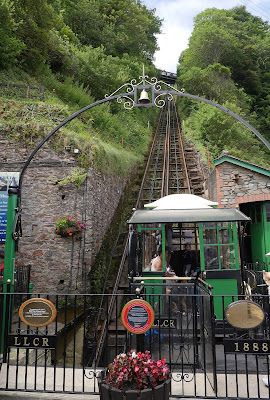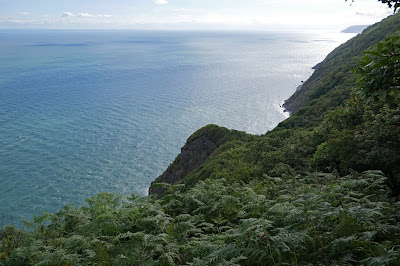The Town Hall
Stoke is rather an unusual city in that it was formed from six towns: Stoke, Hanley, Burslem, Tunstall, Longton and Fenton. An application for city status was made in 1925, but rejected by the Home Office as it had fewer than 300,000 inhabitants. The decision was overturned after a direct approach was made to King George V who agreed that the borough ought to be a city. The public announcement of the elevation to city status was made by the King during a visit to Stoke on 4 June 1925. (This is one of several examples which contradict the widespread, but erroneous belief that a city has to have a cathedral - see my Cities page.)
It is in consequence rather a sprawling place and I decided to focus on Hanley, which is signposted as the city centre and contains a cultural quarter, which sounded promising. I started this walk in Albion Square opposite the Town Hall. It was in fact built as the Queen's Hotel in 1869 - and it does rather look like one.
Then down Bagnall St past the imposing Victoria Hall. It was constructed as an annex to the Town Hall in 1888, as part of the celebrations for Queen Victoria's Golden Jubilee. There is also modern extension (out of shot).
Then into John St and Bethesda St to find the Museum. Main claim to fame is the Staffordshire Hoard.
The hoard consists of a large number of Angl-Saxon metal artifacts which was discovered in 2009 in a field near the village of Hammerwich in Staffordshire. The hoard was purchased for £3.285 million jointly by the Birmingham and Potteries Museums under the Treasure Act 1996. Here is an example of the cleaned and restored finds.
They are very striking and have been exquisitely restored, but I was disappointed to be honest by the small number and small size of the exhibits on show. Maybe the best bits are in Birmingham? There is also a display at Tamworth castle.
The other main exhibit is a restored Spitfire. The designer of this, dare I say iconic, plane was a local man, Reginald Mitchell.
Opposite the Museum is what looks like a pub, with beautiful decorations. It was raining really hard now and I had to take my picture from under an awning outside the Museum. I couldn't take the main facade which was even more beautifully decorated.
Round the corner was the extravagant Bethesda Church, with a lovely art deco building next to it.
The nave of the church, seen from the Museum again, had very attractive brickwork.
I then walked along Pall Mall and was delighted by the terracotta decoration on this pub.
Then up Piccadilly to find an extravagant art deco shop on the corner.
Now round the corner into Tontine Square where the former Market Hall of 1831 is now a combination of Waterstone's and Wetherspoon's. The pub turned out to be the Reginald Mitchell. A nice coincidence.
Nearby was another splendid pub ...
... and, shortly afterwards, a house with wonderful brick decoration under the eaves.
It was now raining very hard and so I abandoned any further efforts at exploration.
My overall impression was of a city which has not looked after its (mainly 19th century) heritage very well. Most of the streets have a jumble of buildings from different periods and there is no coherent centre. It feels like a town rather than a city.
Conditions: wet and grey, cool.
Distance: maybe a mile and a half.
Rating: three stars.






















































